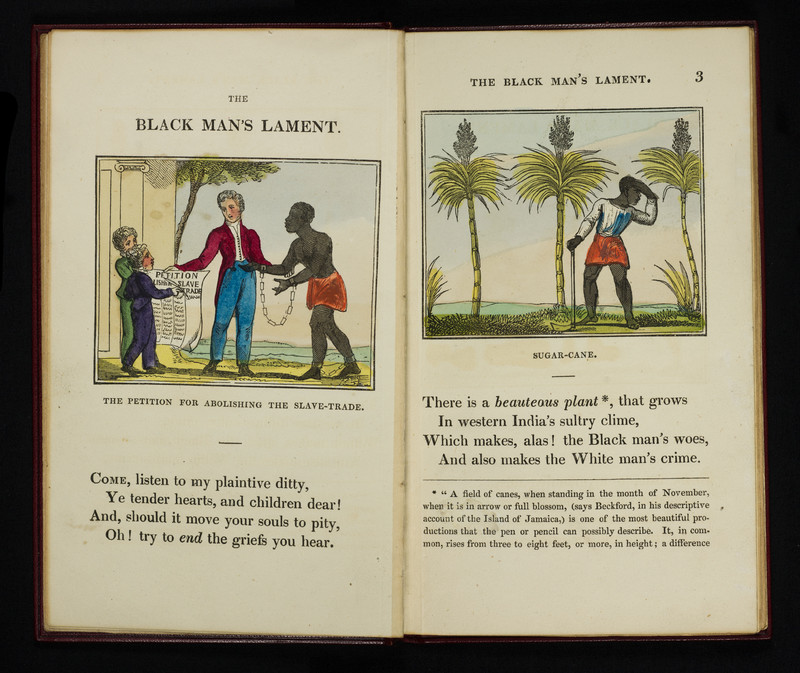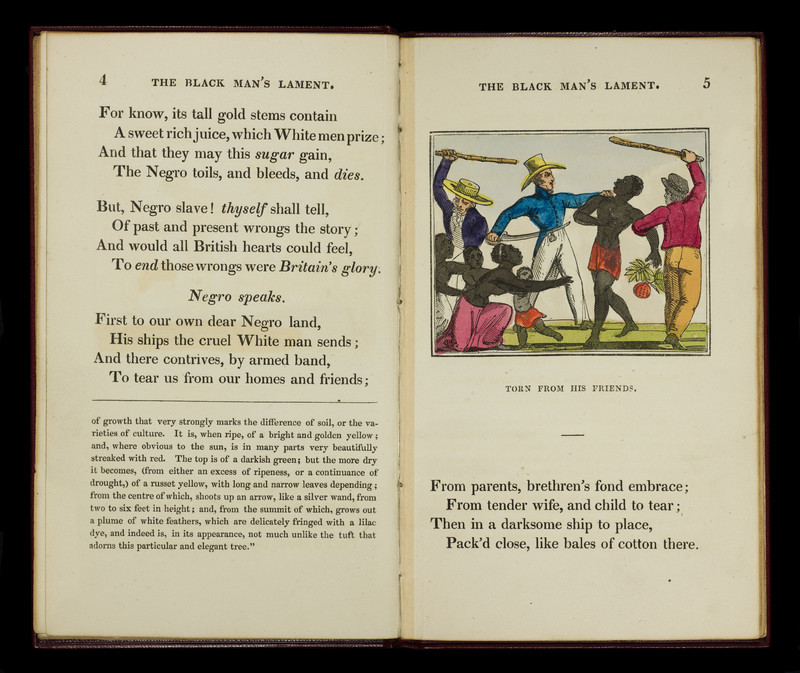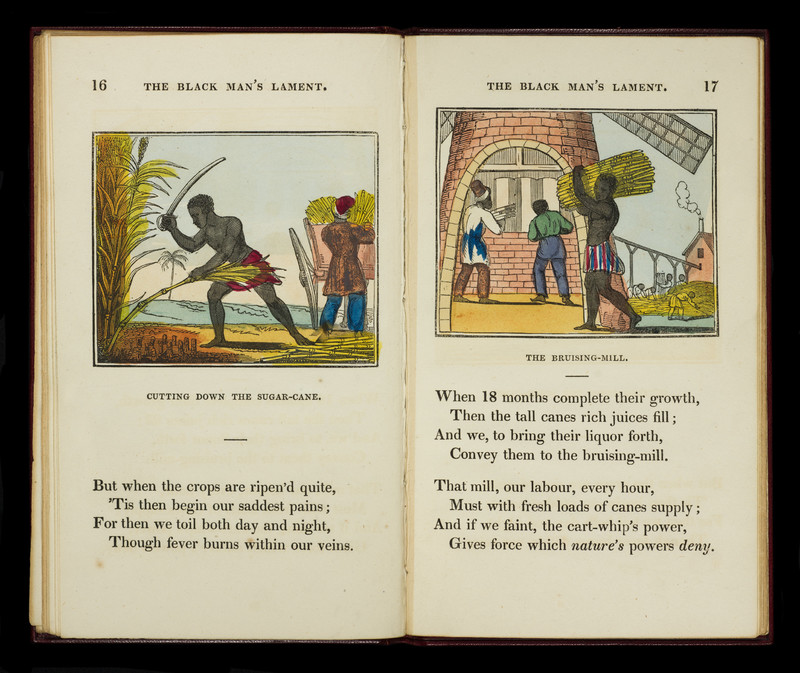The Black Man’s Lament; or, How to Make Sugar
Item
- Title
- The Black Man’s Lament; or, How to Make Sugar
- Description
-
One of the earliest abolitionist books for children, this production story by the Quaker abolitionist novelist and poet, Amelia Alderson Opie is a call to political action that eschews the pleasures of consumption. The copperplate engravings are by an unknown artist, but the style indicates that children’s publishers Harvey and Darton, a prominent abolitionist and Quaker firm, used the same artist for their reprint of William Cowper’s “The Negro’s Complaint” (Cutter, p. 71). According to historian Martha Cutter, the illustrator takes care to represent “distinctive (rather than stereotypical) persons,” who allow for intersubjectivity by meeting the viewer’s gaze (p. 82).
Opie adapts the production story formula to foreground her abolitionist message, by opening her story with a plea to readers “to end the griefs you hear (p.2). The opening illustration shows two children signing a petition in support of abolition of the slave trade. A man in chains on the right resembles Wedgewood’s often circulated abolitionist image of a supplicant slave, but rather than kneeling, he stands and reaches out to the children. The right-hand page introduces sugar cane as a “beauteous plant” that “makes, alas! The Blank man’s woes, / And also makes the White man’s crimes,” with a lengthy small print footnote on sugar cane’s appearance and cultivation (p. 3). Readers accustomed to the scientific language of production stories would be surprised to find the actual process of sugar making relegated to the footnotes. Again, on the next spread, technical detail that would usually occupy a prominent place remains peripheral, while the emotional appeal of a human story dominates (p. 4). At this moment in the story, the enslaved man takes over narration until its conclusion. The accompanying illustration shows him “torn” from his wife and infant by men wielding swords and cudgels (p. 5).
Some of the images, such as “Cutting Down the Sugar-Cane” and “The Bruising-Mill” (pp. 16-17) closely resemble those provided in other sugar production narratives, such as Negro Labour (1809) or William Newman’s A History of a Pound of Sugar (1861). This conformity to generic expectations makes the unique text below the images all the more striking. Harvest time is usually portrayed in sugar production narratives as a joyous, healthful time when harvesters gain weight by chewing the ends of cut cane. But in a departure from this formula, Opie’s speaker describes harvest as the beginning of “our saddest pains; / For then we toil both day and night.” Instead of feeding themselves, they feed an ever-hungry grinding mill.
- Creator
- Opie, Amelia Alderson
- Date
- 1826
- Subject
- abolitionist literature
- production story
- sugar
- Harvey and Darton
- Rights
- Public domain
- Obtained permission for digital images
- Courtesy, The Lilly Library, Indiana University, Bloomington, Indiana
- Identifier
- The Lilly Library, Indiana University, Bloomington, Indiana, Call Number/Collection Number: TP377.O61 B62 1826
- Bibliographic Citation
- Opie, Amelia Alderson. (1826). The Black Man’s Lament; or, How to Make Sugar. London, Harvey and Darton.





